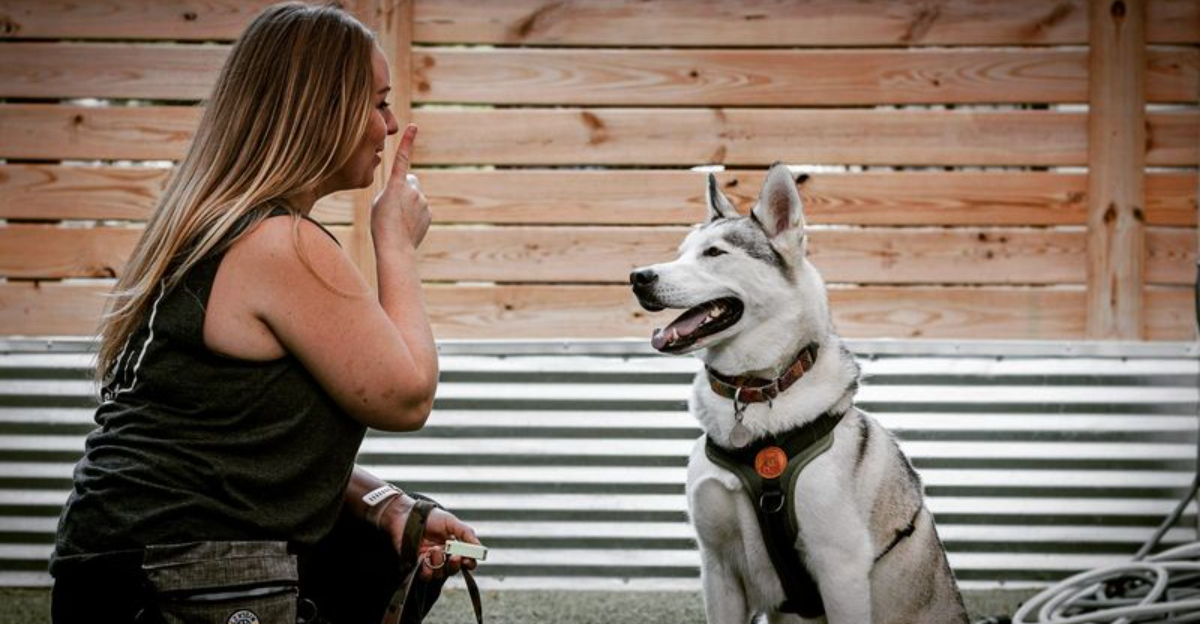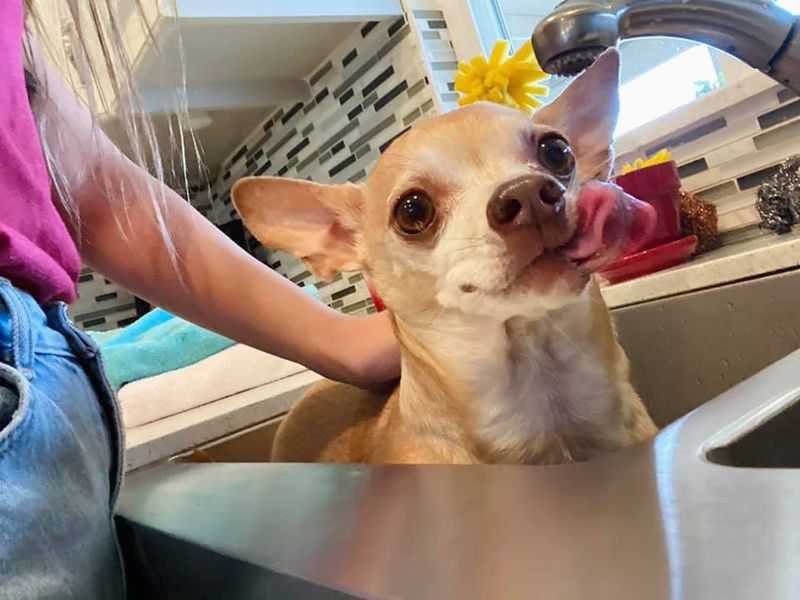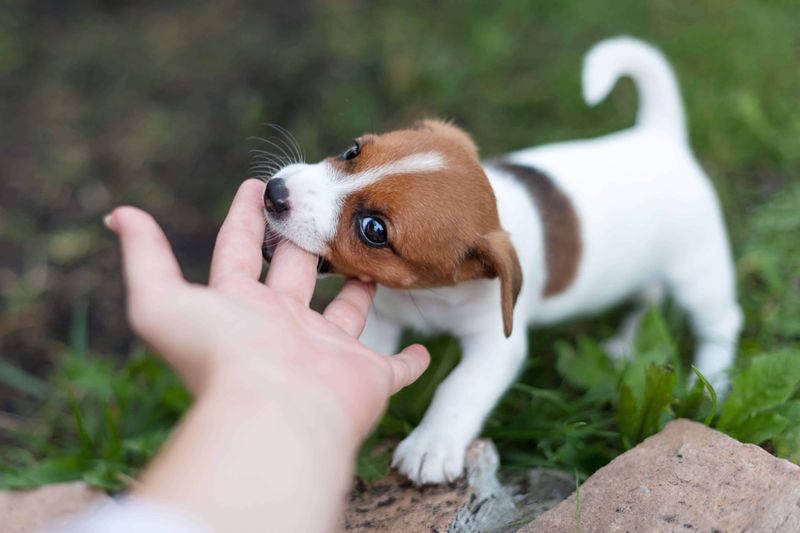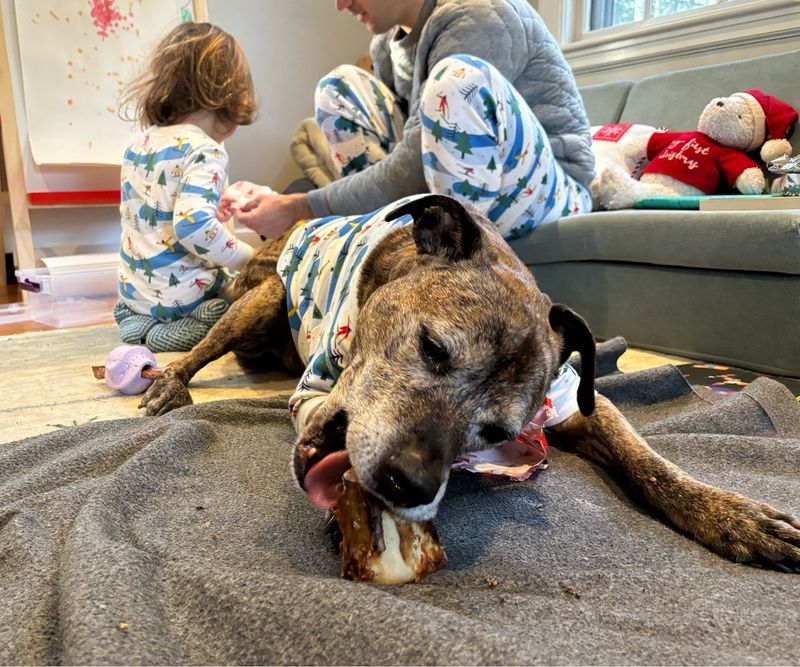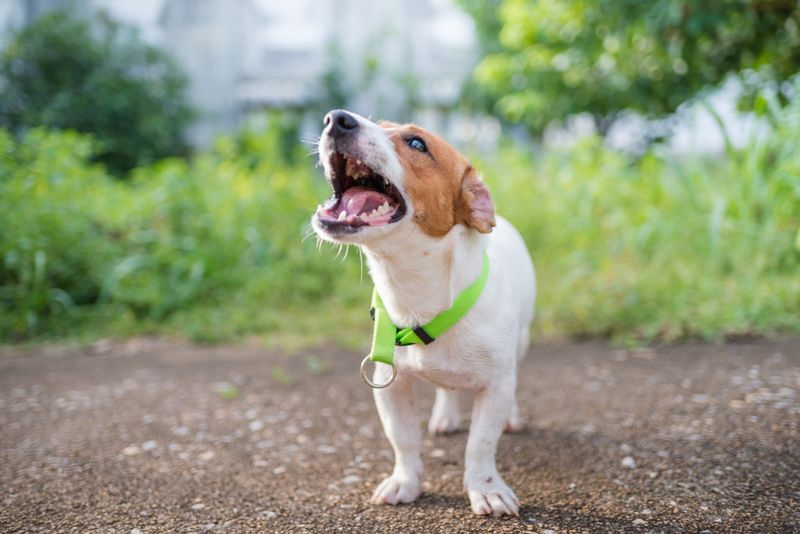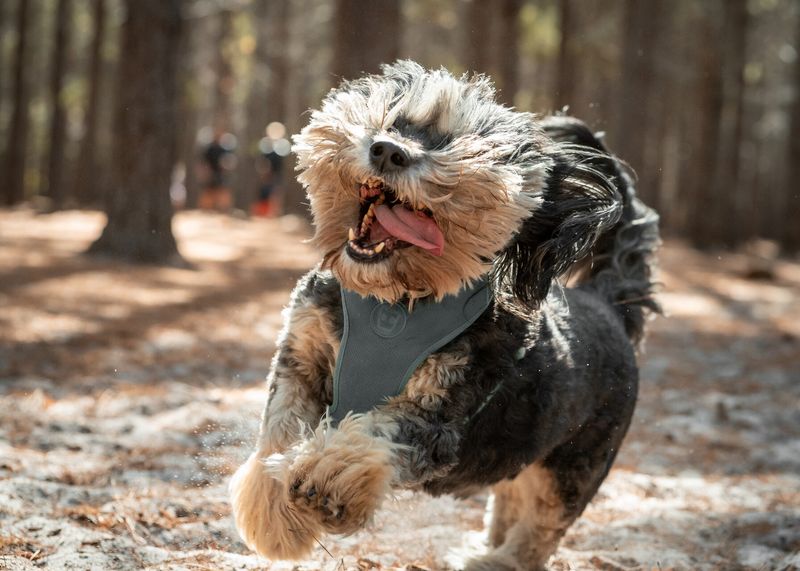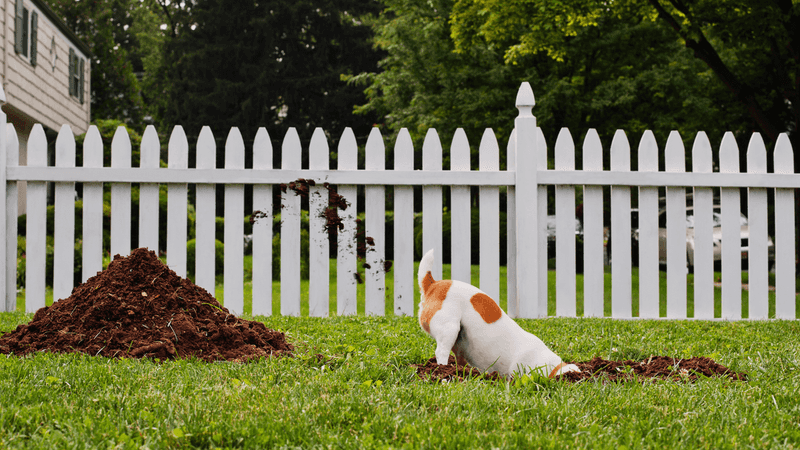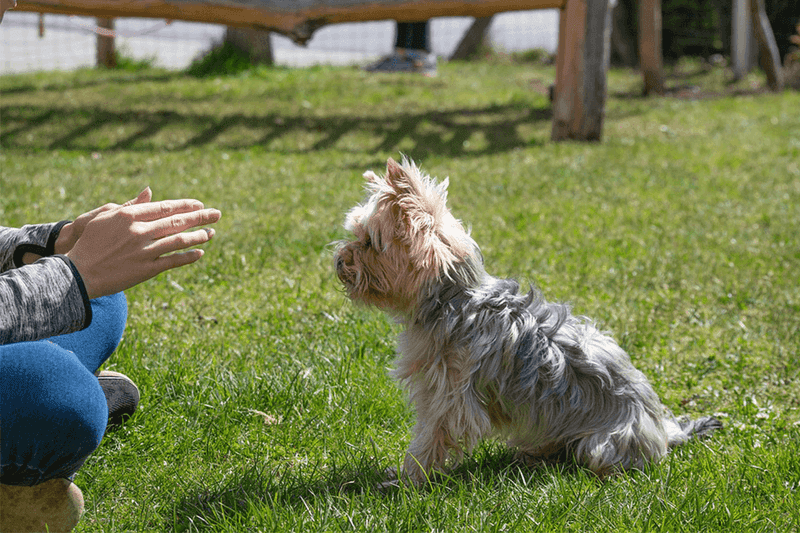Small dogs often exhibit behaviors that owners might find cute, but these can be subtle warning signs of underlying issues. Understanding and addressing these behaviors can lead to healthier, happier pets and stronger human-animal bonds.
Resource Guarding
Resource guarding, such as growling over food or toys, can escalate if unchecked. A small dog may become overprotective of its possessions, seeing them as vital for survival. This behavior often stems from insecurity or past experiences of deprivation. Owners may find it endearing when their dog fiercely protects a toy, but it can lead to aggressive outbursts. It’s essential to teach your dog that sharing is safe and rewarding. Gradual training and positive reinforcement can transform possessiveness into trust and cooperation, creating a calmer household dynamic.
Separation Anxiety
Separation anxiety is a common issue in small dogs, leading to destructive behavior when left alone. Imagine your dog feeling abandoned every time you leave the house. This results in chewed furniture or incessant whining. For dogs, this anxiety is real and distressing. To help, owners can build a reassuring routine and gradually increase alone time, using comfort objects or calming aids. Professional advice might also be beneficial. A confident dog that feels secure in its environment will exhibit far less anxiety, benefiting both owner and pet.
Jumping on People
While a small dog jumping up might seem harmless, it reflects a lack of boundaries. Picture a tiny Chihuahua leaping to greet every visitor, demanding attention. This behavior can become problematic if not managed early. Teaching polite greetings is essential for both safety and social harmony. Consistent training, where rewards are given for calm behavior, can curb this tendency. Over time, your dog will learn that staying grounded gets positive attention, leading to more enjoyable interactions for everyone involved.
Nipping and Biting
Nipping and biting might be seen as playful, especially in puppies, but it can quickly become concerning. Picture a small puppy with sharp teeth, nipping at fingers during play. This behavior can escalate into serious biting if not addressed. It’s crucial to teach bite inhibition early on. Redirecting this energy into toys and teaching gentle play manners helps. Consistent training ensures your dog grows into a well-mannered companion. Remember, teaching boundaries during puppyhood sets the stage for lifelong positive behavior.
Fearful or Timid Behavior
Fearful or timid behavior in small dogs can be more than just a shy personality trait. Imagine a dog hiding or trembling during social gatherings, overwhelmed by the surroundings. This can limit the dog’s experiences and enjoyment. Identifying the triggers and gradually desensitizing the dog to them is key. Through supportive exposure and confidence-building activities, a timid dog can gain assurance. The transformation from fearful to fearless is rewarding, fostering a more balanced and joyful pet.
Excessive Barking
Excessive barking in small dogs isn’t just noisy; it’s often a cry for help. Many small breeds are known for their vocal nature, but when barking becomes constant, it might indicate anxiety or a need for attention. Imagine a dog constantly guarding its space or reacting to every little sound. This behavior can be stressful for both the pet and its owner. Addressing the root cause, whether it’s boredom, anxiety, or fear, is crucial. Training and understanding your dog’s triggers can help reduce unnecessary barking and lead to a quieter home environment.
Inappropriate Chewing
Inappropriate chewing can be more than just teething—a sign of boredom or stress. Consider a small dog caught in the act, gnawing on shoes or furniture, leaving a trail of destruction. This behavior, if left unaddressed, can damage property and the dog’s health. Providing appropriate chew toys and engaging activities can redirect this energy. Training and supervision are crucial, teaching the dog what’s acceptable to chew. By channeling this natural behavior constructively, harmony is restored in the home.
Excessive Licking
Excessive licking, whether self-directed or towards objects, can signal discomfort or anxiety. Picture a small Pomeranian, obsessively licking its paw until it’s raw. This compulsion might seem harmless, yet it often indicates stress or an underlying health issue. Consulting a vet is wise to rule out medical concerns. Behavioral training and creating a soothing environment can reduce this habit. The key is understanding the root cause, ensuring the pet feels secure and content, reducing compulsive behavior.
Aggression Towards Other Dogs
Aggression towards other dogs is a serious concern for small dog owners. Imagine a small pug snarling and lunging at fellow canines during a park visit. This behavior can limit social opportunities and lead to dangerous encounters. Identifying the cause, whether fear or dominance, is vital. Structured socialization and professional guidance can help reframe these interactions positively. With patience and consistent training, your dog can learn to coexist peacefully, paving the way for enjoyable outings.
Hyperactivity
Hyperactivity in small dogs can stem from pent-up energy or lack of mental stimulation. Envision a tiny terrier zooming around the house, bouncing off furniture in a whirlwind of excitement. While initially amusing, this behavior can indicate unmet needs. Regular exercise and engaging activities are key to managing hyperactive tendencies. Introducing training games and puzzle toys provides mental stimulation, helping focus the dog’s energies constructively. A balanced routine transforms chaos into calm, benefiting both pet and owner.
Begging for Food
Begging for food might seem endearing at first, but it encourages unhealthy habits. Picture a small beagle, with pleading eyes, stationed at the dinner table, waiting for scraps. This behavior, if reinforced, can lead to obesity and digestive issues. Teaching your dog to respect mealtime boundaries is crucial. Establishing a feeding routine and ignoring begging behaviors helps break the cycle. Over time, your pet will learn that patience is rewarded, leading to a healthier lifestyle and a more pleasant dining experience.
Digging
Digging is often seen as a nuisance, yet it’s a natural instinct for many dogs. Picture a small dachshund enthusiastically burrowing into the garden, dirt flying everywhere. While some view this behavior as cute, it can destroy landscaping and indicate boredom. Providing designated digging areas or engaging activities can help. Understanding and channeling this instinct positively ensures that both the garden and the dog’s needs are preserved. Encouraging acceptable digging behavior keeps pests at bay and pets fulfilled.
Ignoring Commands
Ignoring commands isn’t merely disobedience; it can signal confusion or lack of training. Imagine a small schnauzer sitting defiantly, turning a deaf ear to its owner’s calls. This behavior often frustrates owners, yet it highlights the need for clearer communication. Reinforcing commands through consistent, positive training builds understanding and trust. Patience and repetition are key. As the dog’s confidence grows in responding to cues, the bond between pet and owner deepens, fostering a harmonious relationship.
